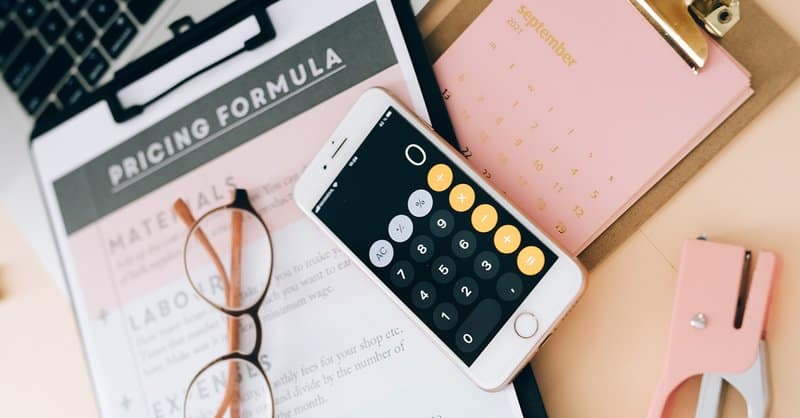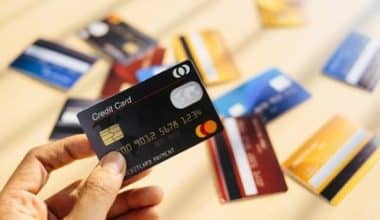Whether for personal or professional use, credit card applications require knowledge of the process and language. Credit cards can delay the pain of a big purchase until the money is received or spread the cost over time. If you miss credit card payments or pay late, you may be in financial trouble. Outstanding balance, also known as current balance or balance outstanding, is a term used to describe the total amount of your unpaid credit card balance. As credit card use does not necessitate immediate payment, this represents the total amount that will be owed at the conclusion of the payment period. Keep reading so you will understand more about how to solve an outstanding balance, the difference between the outstanding balance and the current balance, how it affects the credit score, and its example.
What Is an Outstanding Balance?
An outstanding balance is a total amount that is still due on a credit card and has not yet been paid off. Spending, balance transfers, cash advances, interest, and fees of any kind are all part of this. Your current balance on your credit card is a snapshot of your account as it is right now.
Balances fluctuate from minute to minute as you use your card. As soon as a charge, like a $75 supper, is applied to an account, it becomes part of the total due. The amount of available credit is based in part on the current balance. Available credit is calculated by deducting the current balance from the total allowed credit and then adding any future charges that haven’t yet been posted to the account.
Furthermore, your current credit card debt can comprise the following types of charges:
- Purchases
- Cash advances
- Balance transfers
- Interest charges
- Fees
Your credit cards each have a specific credit limit, also referred to as a spending cap. One of the factors used to determine your available credit—the money you haven’t yet spent—is your current balance. To figure how much money you still have, subtract the entire amount due from the total amount you can borrow. Don’t forget to include any credit card charges that can’t show up on your account yet.
Does Outstanding Balance Affect Credit Score?
Yes, an outstanding balance affects the credit score. Your credit card debt is a major component in determining your credit score. It’s for this reason that running up your credit card balances is never a good idea. On the contrary, you may find that your credit score drops if you charge the maximum amount on your credit card every month. If your credit score drops, it could mean higher interest rates on future credit card and loan applications. If you have a low credit score, it could affect your ability to rent an apartment, get a cell phone plan, and even more.
Furthermore, Some people may not know that credit scores do not consider or take into account monetary resources. So, it doesn’t matter if you think you can afford to charge the absolute maximum on your card; doing so will still have a negative impact on your credit score.
What Does Outstanding Mean on a Payment?
A sample invoice is being issued to a customer who has not yet paid for a previous invoice. This means that the invoice is considered overdue until the same moment it is paid.
Outstanding Balance vs Current Balance
There may be a difference between your current balance and your outstanding balance depending on when you use your credit cards, how often you pay, and how often you check your account balance summary.
This is due to the fact that your account balance reflects any transactions such as deposits, payments, or interest accrued to your account, even after your billing cycle has ended.
If you have made any purchases after your billing cycle concluded, you can verify this by logging into your account online and seeing a different amount than what was shown on your statement.
If your card’s billing cycle is from the 1st to the 28th of the month, and you charge $1,000 in purchases during that time, your statement balance will be $1,000 as of the 28th. The statement amount will remain $1,000 if you make an extra $500 purchase on the 29th, but your current balance will increase to $1,500 because the additional $500 was purchased after your billing cycle concluded.
Your current amount is likely to be less than your outstanding balance if you made a payment after your billing cycle finished and did not make any more purchases.
How Do You Solve Outstanding Balance?
Finance costs are typically measured by credit card companies using a weighted medium-scale balance, and the outstanding balance is the most commonly used metric for doing so. Next, multiply the forecast daily average balance by the appropriate rate of interest. The outstanding balance of a consumer’s loans and credit cards is a component of his credit score. Credit bureaus often get monthly data detailing the average outstanding balances on current accounts, as well as any past-due amounts.
Creditors report a borrower’s unpaid balance and outstanding debt to credit bureaus on a monthly basis. The outstanding balances and the speed with which debts are repaid are two criteria that determine a borrower’s credit score. When a debtor’s total outstanding balances go down, his credit score will go up. This is a practical way to solve an outstanding balance.
Do I Need to Pay the Outstanding Balance?
Yes, you need to pay an outstanding balance. You’re looking at your credit card account and trying to figure out how much of the balance you should pay. Your current financial condition should be taken into account. Here are three options for making a payment that won’t affect your credit score.
#1. Bring Down Your Credit Utilization Ratio
Be as thorough as possible in paying down your outstanding balance. Reducing your credit utilization ratio, which accounts for 30% of your score, is a smart idea. Total credit card debt as a percentage of available credit. Credit usage ratios below 30 percent are recommended by certain experts. Alternatively, some have proposed much smaller percentages, such as 25% or even 10%.
#2. Pay at Least the Bare Minimum
Typically, the statement balance is greater than the minimum payment required to be shown on the statement. Say you have a $2,000 balance on your statement and a $50 minimum payment is due. A minimum payment of $50 is expected on or before the due date. At the very least, you’ll avoid having to pay any interest or late fees.
#3. Stay Away From Interest Costs
However, the whole $2,000 sum on the statement must be paid if you wish to avoid interest charges. Paying off your entire statement debt at once is the best method to avoid incurring interest fees. To avoid interest and fees, you don’t have to pay out the entire debt. As long as the overdue is applied to the statement balance, everything will be fine.
Does Outstanding Balance Mean Overdue?
No, it is not past due simply because there is a balance remaining on the account. The balance on your credit card increases each time you make a purchase with it throughout a billing cycle. (A bill is considered “past due” when payment wasn’t received by the due date.) There will be an increase to the total amount due to you if there is an outstanding debt.
Is an Outstanding Balance Negative?
No. Outstanding and negative balances are two entirely different things. Unpaid balances are a representation of what the cardholder owes to the company that issued the card. The opposite of a positive balance is a negative balance, which indicates that the card issuer owes the cardholder money.
Is an Outstanding Balance a Debit or Credit?
Your “outstanding balance” is the amount of your loan that you have borrowed but have yet to repay in full. Your interest payment for the statement period is determined by the amount provided to the lender. Credit bureaus also consider how much of a balance you currently have when determining your creditworthiness.
Which Outstanding Balance Should You Pay?
Every person’s financial position and aspirations are different, but in general, it’s best to pay off your bill balance each month to avoid paying any fees or interest.
If you don’t pay the whole outstanding balance of your credit card statement by the due date, it will carry over to the following billing cycle and begin accruing interest and, depending on your credit card agreement, finance charges.
Of course, it’s understandable if you can’t pay off your entire statement debt each month; after all, that’s how the credit card company generates money. However, you should still strive to pay at least the minimum payment on time each month to keep your credit history unscathed and prevent late fees.
Setting up automatic bill pay with your credit card issuer allows them to deduct the minimum payment amount from your bank account on the due date each month, protecting your credit from the potential effects of a missed or late payment.
It’s always an option to make a larger payment on your credit card balance if you find yourself in a position to do so.
The Importance of Knowing Your Outstanding Balance
Maintaining a good financial standing and avoiding debt requires constant monitoring of credit card balances. In order to keep your spending under control, it is essential that you monitor your statements on a regular basis to spot any unnecessary purchases that are increasing your cost. Seeing all your random Amazon purchases in one place is a useful deterrent, for instance, if you have a habit of spending too much money on the site.
You can also catch any fake charges by carefully reviewing your statement. In this approach, you won’t have to worry about unknowingly paying for fraudulent transactions, as you may immediately notify your issuer.
If you’re awaiting a refund or annual fees have been charged to your account, you’ll want to make sure you check your balance regularly.
Conclusion
Whether you want to pay off your entire outstanding balance at the conclusion of the billing cycle or make minimum monthly payments depends on your personal financial situation and choices. The best way to avoid the stress of missing a payment if you’re going to be out of the country or otherwise unable to access your bank account for a while is to pay off your current balance in full before it appears on your statement. If you pay your entire bill balance on time every month, however, you can let it accumulate until your next statement without incurring any fees.
You can better manage your debt, achieve your financial goals, and make the most of your credit cards if you have a firm grasp on the difference between the two balances.
Outstanding Balance FAQs
What is outstanding debt on tax return?
Individuals might run up tax debt if they fail to pay or file their returns accurately. The IRS Form 1040’s “Amount You Owe” section shows the remaining tax due when payments fall short.
How long do outstanding debts last?
Until the debt is paid off, it will continue to accrue interest and fees in the majority of states in the US. Debts will remain on a credit report for seven years under the Fair Credit Reporting Act. However, there are situations in which they stick around for a longer time than usual.
What is it called when your balance is negative?
Your account becomes negative when the balance goes below zero. This occurs when you make payments that you don’t have enough money in the account to cover. If the bank accepts the payment, your account incurs a debt, making your balance negative.
Similar Posts
- Best Top 13 BILLING SYSTEMS FOR SMALL BUSINESS in 2023 .
- WHAT IS CASH CONVERSION CYCLE: How to Boost and Calculate CCC.
- OFFICE MANAGEMENT SYSTEM: Best Free and Paid Options In 2023.
- OUTSTANDING CHECKS: Overview(+How to Avoid Outstanding Checks)






